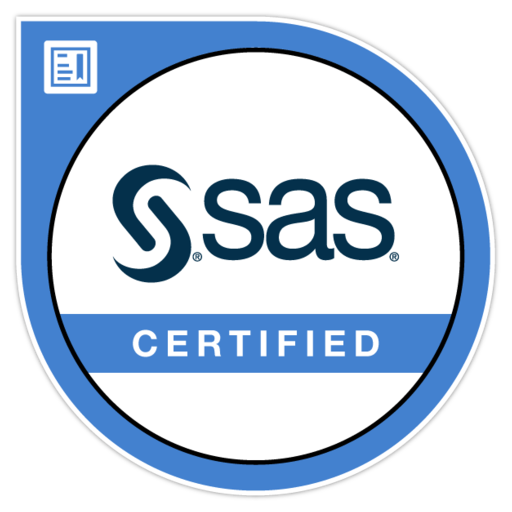Description
Introduction
The SAS Statistical Business Analyst certification is designed for professionals who use SAS software to perform statistical modeling and predictive analytics. This certification validates a candidate’s ability to apply statistical techniques, build predictive models, and analyze data effectively using SAS programming tools.
This training prepares participants for the SAS Certified Statistical Business Analyst Using SAS9: Regression and Modeling exam by covering essential statistical concepts, predictive modeling techniques, and optimization methods. The course is ideal for data analysts, business intelligence professionals, and statisticians looking to enhance their analytical skills and leverage SAS for data-driven decision-making.
By the end of the training, participants will be able to:
- Apply statistical analysis techniques in SAS
- Perform regression analysis and model selection
- Utilize categorical data analysis for business insights
- Interpret and optimize predictive models
- Understand model validation and performance evaluation
Prerequisites
- Basic knowledge of statistics and probability
- Familiarity with SAS programming or completion of the SAS Base Programmer certification
- Understanding of data management and analytics concepts
- Experience in business intelligence or data science is beneficial but not required
Table of Contents
1. Introduction to SAS for Business Analytics
1.1 Overview of SAS Statistical Analysis Capabilities
1.2 Introduction to SAS Studio and SAS Enterprise Guide
1.3 Data Preparation and Cleaning in SAS
1.4 Importing and Managing Datasets in SAS
2. Statistical Analysis and Hypothesis Testing
2.1 Descriptive Statistics and Data Exploration
2.2 Inferential Statistics: Confidence Intervals & Hypothesis Testing
2.3 Understanding Probability Distributions
2.4 Performing T-Tests, ANOVA, and Chi-Square Tests in SAS
3. Regression Analysis Using SAS
3.1 Introduction to Regression Modeling
3.2 Simple Linear Regression in SAS
3.3 Multiple Regression Analysis and Model Building
3.4 Identifying Multicollinearity and Handling Outliers
3.5 Model Interpretation and Assumption Validation
4. Categorical Data Analysis
4.1 Introduction to Categorical Data and Logistic Regression
4.2 Performing Binary Logistic Regression in SAS
4.3 Multinomial and Ordinal Logistic Regression
4.4 Evaluating Model Fit and Performance
4.5 ROC Curve and Classification Metrics
5. Predictive Modeling Techniques
5.1 Introduction to Predictive Analytics in SAS(Ref: SAS Business Intelligence: Data Exploration and Reporting)
5.2 Decision Trees and Random Forest Models
5.3 Neural Networks for Business Analytics
5.4 Using SAS PROC GLMSELECT for Model Selection
5.5 Cross-Validation and Overfitting Prevention
6. Model Performance Evaluation
6.1 Measuring Model Accuracy and Predictive Power
6.2 Root Mean Square Error (RMSE) and Mean Absolute Error (MAE)
6.3 Assessing Residuals and Model Robustness
6.4 Techniques for Improving Model Performance
7. Optimization Techniques for Business Decision Making
7.1 Introduction to Business Optimization
7.2 Using SAS Optimization Procedures
7.3 Linear and Nonlinear Optimization Models
7.4 Real-World Case Studies in Business Optimization
8. Preparing for the SAS Statistical Business Analyst Exam
8.1 Understanding the Exam Structure and Topics
8.2 Sample Questions and Practice Tests
8.3 Exam-Taking Strategies and Best Practices
8.4 Common Pitfalls and How to Avoid Them
Conclusion
Mastering SAS statistical analysis and predictive modeling is essential for professionals looking to leverage data for better business decision-making. This training provides hands-on experience in applying regression techniques, categorical analysis, and predictive modeling using SAS tools. By the end of this course, participants will be fully prepared for the SAS Statistical Business Analyst certification exam, equipped with the skills needed to analyze complex datasets and drive data-driven business strategies.







Reviews
There are no reviews yet.